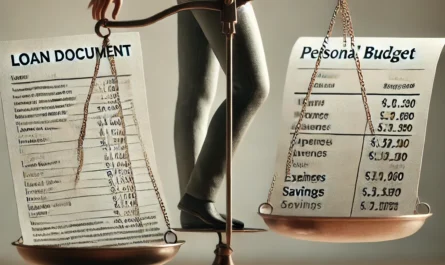In today’s fast-paced financial environment, managing debt is crucial to maintaining personal economic stability. Equated Monthly Installments (EMIs) can often be overwhelming, especially when they take up a large portion of your monthly income. However, if you’re looking to lower your loan EMIs, you’re in the right place. There are numerous strategies and solutions available to make your monthly loan repayment more affordable without negatively impacting your credit score or financial planning.
This comprehensive guide explores practical, effective methods to lower your loan EMIs and lessen the financial burden that comes with long-term borrowing.
Understanding EMIs: What They Are and How They Work
Before diving into strategies on how to lower your loan EMIs, it’s essential to understand what an EMI is. An EMI is the fixed monthly amount you pay to the lender for your loan. It consists of both the principal loan amount and the interest. Your EMI can vary based on factors such as:
- Loan amount
- Interest rate
- Loan tenure
- Type of interest (fixed or floating)
Understanding the components that influence your EMI helps you make informed decisions when adjusting it.
Why Lowering Your EMIs Is Important
High EMIs can strain your monthly budget and reduce your ability to save or invest. Lowering your loan EMIs offers several benefits:
- Improved cash flow: Lower EMIs mean more disposable income to manage other financial obligations.
- Financial flexibility: With reduced EMIs, you have more financial freedom for emergencies or investments.
- Stress reduction: Managing smaller monthly payments can alleviate the stress associated with large loan amounts.
Now, let’s explore the best strategies to reduce your monthly EMIs effectively.
Extend Your Loan Tenure
One of the simplest ways to lower your loan EMIs is by extending the loan tenure. By spreading out the loan repayment over a more extended period, the monthly EMI amount decreases significantly. However, be mindful that while this reduces the EMI, it increases the total interest paid over the loan’s lifetime.
For example, if you have a home loan with a tenure of 10 years, extending it to 20 years will lower your EMI but increase the overall interest outflow. This option works best for those prioritizing immediate cash flow relief over total interest savings.
Refinance Your Loan at a Lower Interest Rate
Refinancing or loan balance transfer is another excellent way to reduce EMIs. By transferring your existing loan to another lender offering a lower interest rate, you can reduce the monthly EMI. This is especially beneficial when interest rates in the market have dropped since you took out the loan.
Be sure to account for any processing fees or transfer costs when refinancing. However, the long-term savings from a reduced interest rate often outweigh the initial refinancing costs.
Part-Prepayment: A Powerful Tool
A part-prepayment is when you pay off a portion of your loan principal in a lump sum. This directly reduces the outstanding principal, lowering both the total interest payable and the EMI amount. Most lenders allow part-prepayments without any penalties, especially in the case of floating rate loans.
For instance, if you receive a bonus or windfall, using it to make a part-prepayment can significantly reduce your loan burden. The reduced principal also lowers the interest, providing long-term EMI relief.
Switch from Fixed to Floating Interest Rates
Fixed interest rates remain constant throughout the loan tenure, whereas floating rates fluctuate based on market conditions. If you have a fixed-rate loan and interest rates are falling, you might benefit from switching to a floating rate. This can reduce your EMIs as floating rates typically offer lower interest during periods of economic growth or reduced inflation.
However, floating rates also come with the risk of increasing if market interest rates rise, so weigh the pros and cons based on the current economic outlook.
Opt for a Step-Down EMI Plan
Several lenders offer step-down EMI plans, where you pay higher EMIs during the initial years of the loan and progressively lower EMIs as the loan progresses. This type of plan can be particularly useful if you anticipate a reduction in income or financial obligations in the future.
Step-down EMIs give you the flexibility to manage your loan repayment in line with your evolving financial situation, making them a practical option for reducing long-term financial stress.
Consolidate Your Loans
If you have multiple loans with varying interest rates and repayment schedules, consolidating them into one loan might help reduce your overall EMI. A consolidated loan often comes with a lower interest rate, allowing for a single, manageable EMI instead of juggling several payments.
Loan consolidation also simplifies your debt management and can offer a longer tenure for repayment, making the EMI more affordable.
Negotiate with Your Lender
Many borrowers don’t realize that they can negotiate their loan terms with their lender. If you have a good credit score, a stable repayment history, and a strong relationship with your lender, you might be able to negotiate a lower interest rate or longer tenure, both of which can reduce your EMIs.
Additionally, you can request for a restructuring of the loan, especially in cases of financial hardship. Lenders are often willing to work with customers to adjust repayment schedules in order to prevent loan defaults.
Consider Top-Up Loans
If you’re paying off a high-interest personal loan, opting for a top-up loan on an existing home loan can be an efficient way to lower EMIs. Home loans generally offer lower interest rates compared to personal loans. A top-up loan allows you to use the surplus funds to pay off high-interest debt, which reduces your EMI burden.
Top-up loans also offer tax benefits, adding further savings to your financial situation.
Take Advantage of Seasonal Offers from Banks
Financial institutions, especially during the festive seasons, often roll out special offers such as lower interest rates or waived processing fees. If you’re planning to take a loan or refinance an existing one, keeping an eye out for these offers can be beneficial.
Seasonal discounts can provide significant savings on EMIs, particularly for home and auto loans, so timing your loan application during these periods can help reduce your repayment costs.
Focus on Improving Your Credit Score
Your credit score is a key factor in determining the interest rate offered by lenders. A higher credit score not only increases your chances of loan approval but can also result in a lower interest rate, which directly lowers your EMI.
Regularly monitoring your credit report, paying your bills on time, and reducing credit card balances can help improve your credit score, leading to better loan terms.
Leverage Government Schemes and Subsidies
In certain countries, the government offers subsidies or benefits for specific types of loans, such as housing or education loans. For example, in India, the Pradhan Mantri Awas Yojana (PMAY) offers interest subsidies on home loans, which can significantly lower EMIs for eligible applicants.
Research whether any government schemes or subsidies apply to your loan type, as this can provide substantial financial relief.
You can also read; How to Choose Between a Secured and Unsecured Loan
How to Lower Your Loan EMIs: A Balanced Approach
Lowering your loan EMIs doesn’t mean you’re taking shortcuts or compromising on your financial obligations. Instead, it reflects smart financial planning that aims to improve your cash flow and reduce debt stress. Whether through refinancing, extending your tenure, or taking advantage of special offers, each strategy discussed above is designed to align with your financial needs and capabilities.
Reducing your EMIs can be the key to financial stability, providing you with more freedom to focus on other essential financial goals, like saving for retirement or building an emergency fund.




